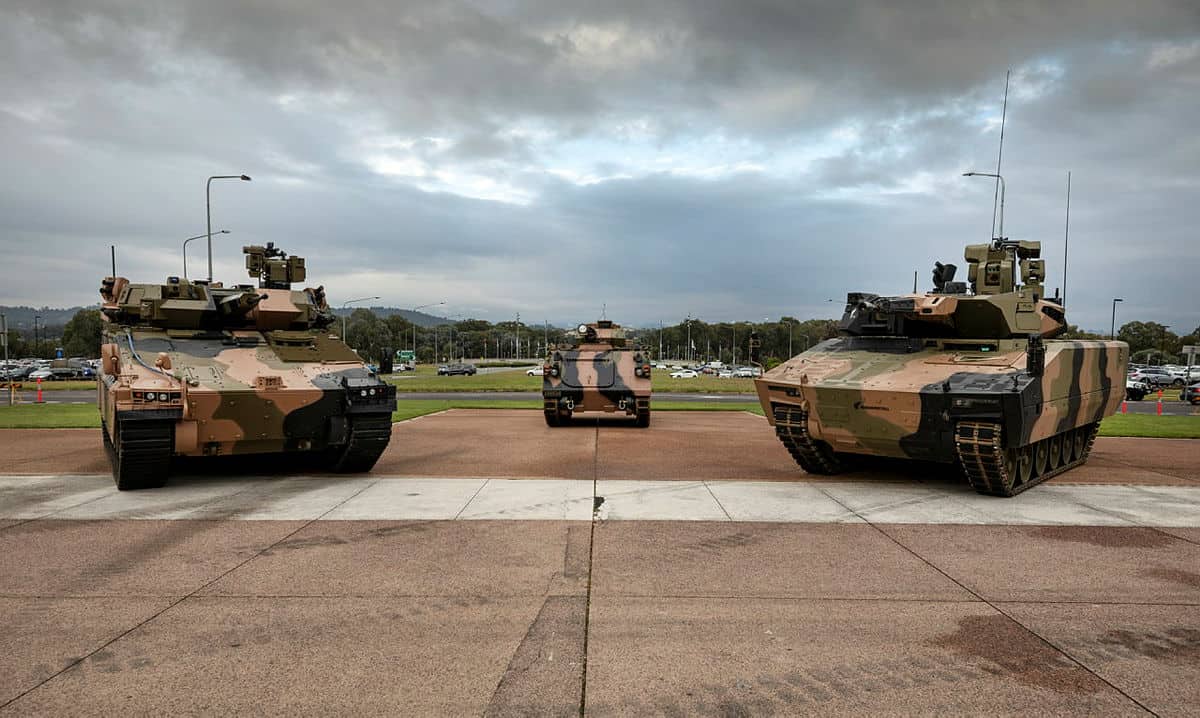

(From left): The Hanwha Defence Australia Redback Infantry Fighting Vehicle, the Australian Army’s current M1123 Armoured Personnel Carrier, and Rheinmetall Defence Australia Lynx Infantry Fighting Vehicle. Photo credit: Australian Army
Two contenders for the largest acquisition project in the history of the Army have been officially unveiled in Canberra.
The new Infantry Fighting Vehicle prototypes are currently under evaluation and, once delivered, the project will provide the Army with an advanced and cutting-edge mounted close-combat capability. In total, the project will be worth between $18-billion and $27-billion.
Acting Minister for Defence, Senator Marise Payne, said the intention is to acquire up to 450 of the high-tech vehicles.
“These next-generation infantry fighting vehicles will provide Australian soldiers with higher levels of protection, mobility, firepower and connectivity,” the minister told journalists. “They will give our troops the best possible opportunity to successfully complete their mission safely.”
Payne said the project is part of a $270-billion investment in defence capability over the next decade, which is aimed at protecting Australia’s national and strategic interests for years to come.
The two shortlisted tenderers for the LAND 400 Phase 3 project are Rheinmetall Defence Australia, offering its KF-41 Lynx, and Hanwha Defense Australia, with its Redback.
If successful, both companies have proposed to build the vehicles in Australia, with substantial investment in Australian industry capability, supporting Australian jobs, talent and technology.
Attending the official unveiling in Canberra, a former Army Major General, Senator Jim Molan, said the Department of Defence was seeking a tracked infantry fighting vehicle, capable of accommodating six soldiers in addition to a crew of three.
“Hanwha Defense Australia and Rheinmetall Defence Australia have each delivered three prototype vehicles which will be tested over the course of this year, as part of a two-year risk mitigation activity,” Molan said.
In a previous statement relating to the project, Minister for Defence, Linda Reynolds, said the delivery of the prototype vehicles would allow Defence to assess the shortlisted tenderers’ performance claims focusing on the highest areas of technical risk.
“These significant activities include Australian soldiers participating in user evaluation and testing, with a particular focus on the armour, firepower and mobility of the platforms,” she stated in February.
A decision on the preferred tenderer will be presented to Government for consideration in 2022.